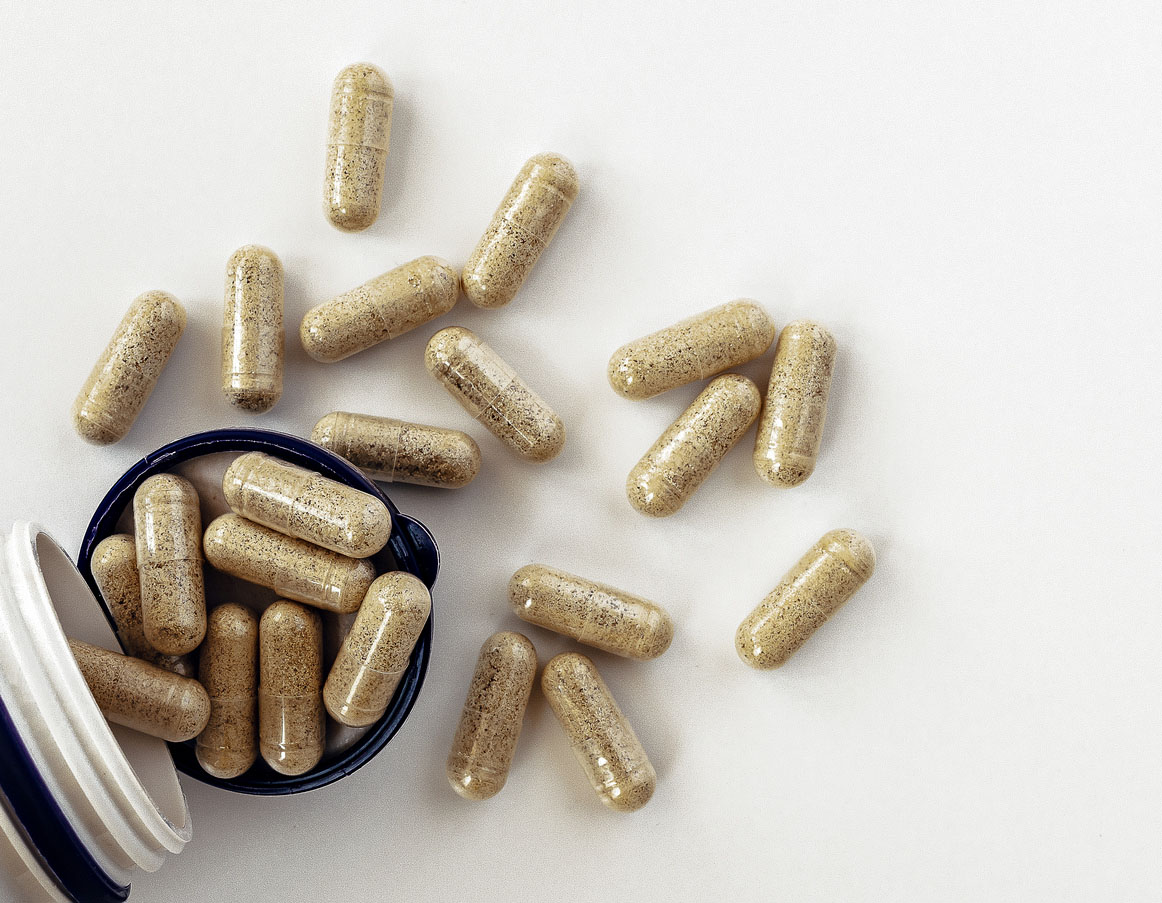Every now and then, I like to highlight a particular supplement that my audience may not be aware of, and go in-depth about its uses, benefits, and potential drawbacks.
This week, I’d like to talk to you about DIM.
Diindolylmethane (DIM) is a versatile nutraceutical for which I find many uses in my practice. It is naturally obtained via dietary consumption of cruciferous vegetables. Brussel Sprouts, Garden Cress, Mustard Greens, Turnip, and Kale are rich sources of glucobrassicans, the mother compounds of beneficial glucosinolates like indole-3-carbinol, which is metabolized into DIM. However, heat treatment, particularly boiling and microwaving, degrades myrosinase, the plant compound responsible for bio-transformation of glucobrassicans into useful molecules like DIM and sulforaphane.
An advantage of supplementation with DIM over consumption of large amounts of raw cruciferous vegetables is avoidance of goitrogenic isothiocyanates. These compounds compete with iodine for binding in the thyroid, potentially contributing to hypothyroidism. DIM is thought not to have goitrogenic properties. To obtain the benefits of DIM contained in just two capsules per day, it is estimated that the average person would have to consume two pounds of raw cabbage family vegetables per day, an intake that might court the danger of thyroid suppression.
DIM possesses hormone-modulating effects. It may do so in several ways. Studies suggest it protects the body from xenoestrogens, compounds that mimic and intensify the effects of estrogen. DIM has also been shown to favorably alter the ratios of “good” to “bad” estrogen. In the prostate, DIM has been found to antagonize the effects of dihydrotestosterone (DHT), an excess of which is associated with risk of enlarged prostate and prostate cancer.
Thus, DIM’s application to hormone-dependent cancers (breast and uterine in women, prostate in men), as well as to the condition of “estrogen dominance”, wherein high estrogen levels promote symptoms like breast pain, fibrocystic breasts, uterine fibroids, endometriosis, PMS, bloating, anxiety, fat accumulation, and heavy menstruation.
Because DIM combats excess estrogen in females, it might help as a diet aid for women who struggle with a pear-shaped fat distribution.
Another theoretical benefit of DIM may be to offset the potential risks of hormone-dependent cancers in patients taking hormone replacement therapy with estrogen or testosterone.
In addition to its hormone-modulating effects, DIM has been found to exert direct anti-cancer effects via a variety of mechanisms: It may promote DNA repair; accelerate the death of cancer cells by restoring apoptosis (programmed cell death); it stimulates the activity of natural killer (NK) cells, the immune system’s surveillance against cancer; and some studies suggests it has anti-angiogenesis effects, depriving growing cancers of their blood supply.
Is DIM compatible with conventional therapy for cancer? Some studies suggest that, not only does it not interfere, but instead may protect normal tissue from the harmful effects of radiation while reinforcing cancer cell destruction. Other research suggests DIM may prevent drug resistance, a major cause of chemotherapy failure.
As a corollary to DIM’s anti-androgen effects, some have proposed its application to conditions of hormone dysregulation like acne, androgenic alopecia, and polycystic ovarian syndrome (PCOS).
Less certain is DIM’s effect on Human Papilloma Virus (HPV). I have long used it successfully as part of a nutritional protocol for women with abnormal Pap smears desirous of preventing progression to invasive cervical cancer. Belief in DIM’s antiviral properties is based on research demonstrating its efficacy against a rare vocal cord disease, recurrent respiratory papillomatosis (RRP), caused by HPV. Preliminary studies and anecdotal reports once suggested that DIM was able to retard the progression of CIN2 and 3 PAP smears, but the latest, most definitive study yielded disappointing findings.
While specific clinical proof is lacking, I have long used DIM as part of my protocol for Barrett’s esophagus, another pre-cancer, along with other targeted supplements, with good results.
A controversy rages in the supplement industry over the relative merits of indole-3-carbinol (I3C) versus DIM. While it is true that I3C has documented intrinsic activities apart from its role as a precursor to DIM, after much research, I sided with the DIM camp. For one, much higher amounts of I3C are required to achieve therapeutic benefits; additionally, concerns have been raised over the safety of I3C; and I3C is said to be less stable than DIM.
Some of DIM’s detoxifying effects may be attributable to its ability to up-regulate cytochrome P450 activity. For this reason, it is advisable to exercise caution whenever using certain medications whose effects might be weakened by co-administration with DIM. And, because of its hormonal effects, it is advisable to refrain from using DIM during pregnancy or lactation, or in infants or small children.
The optimal dosage of DIM for various indications is unclear. I generally administer one or two 75 milligram capsules of Dimprotwice daily. The efficacy of doses greater than 300 milligrams per day has not been established, and some reports of nausea or headache have been reported above that threshold.
What form of DIM is preferable? Researchers prefer standardized BioResponse DIM; to date, most clinical trials have used this formulation. To overcome obstacles to bio-availability, BioResponse DIM is micro-encapsulated in a patented delivery system that is said to guarantee predictable absorption and clinically effective blood levels.






